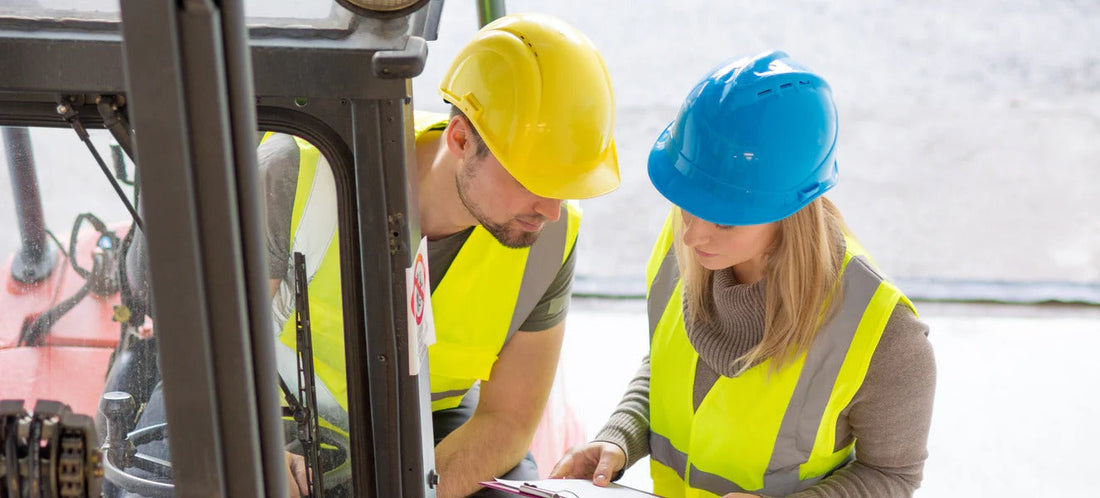
10 Forklift Safety Tips Every Operator Should Know
Share
In warehouses, factories, and construction sites around the world, forklifts are vital pieces of equipment. They move heavy materials efficiently and keep operations flowing smoothly. But while they’re extremely useful, forklifts can also be dangerous if handled improperly. That’s why safety isn’t just recommended—it’s essential.
Whether you’re a new operator or have years of experience behind the wheel, following clear safety protocols is key to preventing injuries and costly accidents. Here are 10 crucial forklift safety tips that every operator should know and practice daily.
1. Get Proper Training and Certification
Before ever stepping into a forklift, every operator must receive formal training and certification. This isn’t just a legal requirement—it’s a smart one. Proper training ensures you understand how to safely operate the equipment, recognize hazards, and respond to emergencies. Without it, you're not only putting yourself at risk, but others around you as well.
2. Always Conduct Pre-Operational Inspections
Before starting your shift, inspect your forklift. Check the brakes, steering, tires, forks, lights, and hydraulic systems. If something isn’t working right, report it and don’t use the forklift until it's been fixed. These simple checks can catch problems early and prevent dangerous malfunctions during use.
3. Wear the Right Safety Gear (PPE)
Your personal protective equipment (PPE) is your first line of defense. Depending on your work environment, this could include a hard hat, steel-toed boots, high-visibility vest, gloves, and safety goggles. PPE may not stop accidents from happening, but it can greatly reduce the severity of injuries if they do.
4. Know Your Load Limits
Every forklift has a maximum load capacity. Exceeding that limit can cause tipping, dropped loads, or mechanical failures. Make sure you know the load chart for your specific forklift and never guess when it comes to weight. If you're unsure, ask for assistance or use a scale.
5. Keep Your View Clear
You can’t avoid obstacles or people if you can’t see them. Always ensure you have clear visibility when driving, and never carry a load so high that it blocks your line of sight. Use your mirrors, and if visibility is poor, ask for a spotter to guide you. Sound your horn at intersections or blind spots.
6. Watch Your Speed
Speeding with a forklift is a recipe for disaster. Slow down when making turns, going around corners, or traveling in areas with pedestrian traffic. Even if you're in a hurry, it’s not worth the risk. A few extra seconds can save lives.
7. Travel with Forks Low and Tilted Back
When moving without a load, keep the forks low to the ground (around 4-6 inches) and slightly tilted back. This improves stability and minimizes the chances of hitting obstacles or people. Only raise the forks when you're lifting or setting down materials.
8. Use the Parking Brake When Unattended
Even if you're stepping away for a moment, always engage the parking brake and turn off the forklift. This prevents unintentional movement and keeps others safe. Never leave the engine running while unattended.
9. Stay Focused—No Distractions
Just like with driving a car, distractions while operating a forklift can lead to serious accidents. Avoid using phones, eating, or engaging in side conversations. Stay focused on your surroundings and the task at hand at all times.
10. Report Unsafe Conditions Immediately
If you notice something unsafe—a spill, damaged equipment, blocked pathway, or a near-miss incident—report it right away. A proactive safety culture relies on everyone doing their part. Reporting early can prevent accidents before they happen.Final Thoughts
Operating a forklift safely requires awareness, responsibility, and discipline. Following these 10 safety tips doesn’t just protect you—it protects your coworkers, your equipment, and the overall productivity of the workplace.
Safety isn’t a one-time task—it’s a daily commitment. Stay alert, stay informed, and always make safety your priority.
